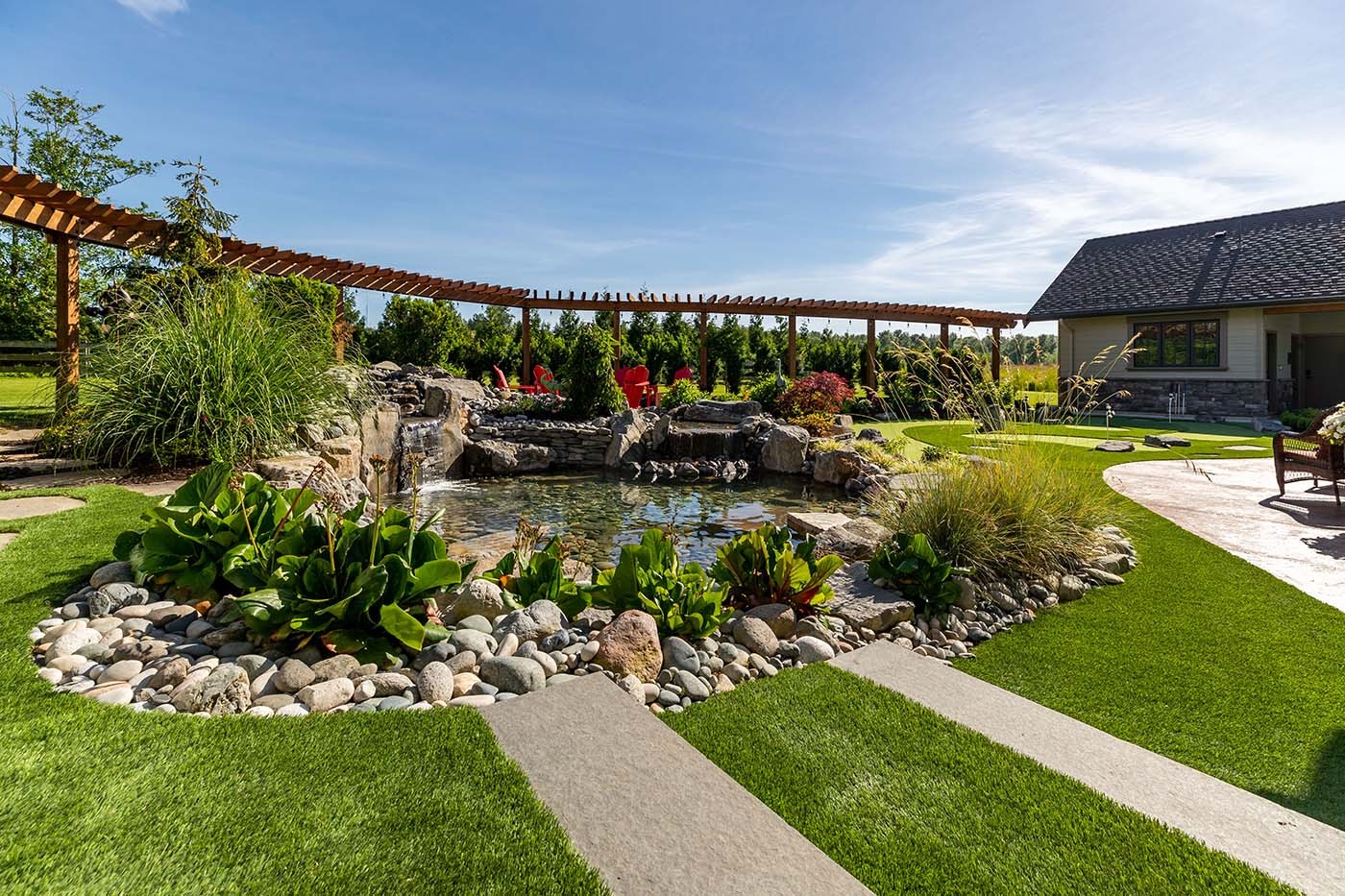
Capture the Beauty of the Night With Landscape Lighting
Enjoy your property long after the sun goes down
Ponds are easier to care for than you may think…
I believe it comes down to the common misconception that ponds are difficult to care for and you’ll spend your entire summer battling mosquitoes and algae. Nothing could be further from the truth, and I’m here to set the record straight.
Nothing in life is maintenance-free, and ponds do require some upkeep… but not as much as people may think. A pond that is professionally designed includes elements that help filter the water naturally, creating a built-in ecosystem. Here are a few tips to keep pond water clean, clear and healthy with minimal effort.
Mosquitoes prefer to breed in still waters, so if you’ve followed the advice above and have installed some form of surface aeration, you shouldn’t have any more than your pondless neighbours.
Even if your pond does attract a few mosquitoes, it’s not a cause for concern — it also attracts birds, frogs, toads, dragonflies and other wildlife that like to feast on them!
Algae is a natural part of a healthy pond, providing nutrients, oxygen, and nourishment for the pond and the insects, snails, fish and other organisms that call it home.
Algae only becomes a problem when it becomes excessive — so don’t ignore it. You can easily keep it in check by adding aquatic plants and a filtration system to your pond.
While it's true that a pond can benefit from occasional cleaning, draining it completely every year can disrupt the ecosystem and harm the fish and plants living in it. Instead, focus on regular maintenance tasks like removing debris, trimming plants, and checking the water chemistry.
Given the chance, there are a lot of predators that would love nothing more than to swoop down to your pond and grab a nice, tasty fish for dinner — but there are some simple things you can do to protect them.
It can be a lot of hard work… but it doesn’t have to be if you follow a regular maintenance schedule and avoid making these common mistakes.
There are tools and products available that can simplify pond maintenance. For example, automatic fish feeders can help to regulate the amount of food your fish receive, while pond vacuums can make cleaning the pond easier and more efficient.
By taking the time to properly plan and maintain your pond, you can enjoy the benefits of a beautiful and tranquil outdoor space without the stress and hassle of difficult maintenance.
Adding a pond to your landscape is a big decision… If you have some lingering questions that need to be answered, reach out so we can chat about your concerns. We’re always happy to help!

Enjoy your property long after the sun goes down
Where to start, what appliances to choose and four major details you can’t miss.
Advice and tips on choosing a spa and hot tub straight from our design team.
The top five benefits of working here… and why our culture rocks!
Our favourite native plants, annuals and perennials for garden projects
The big questions to ask yourself before you start.








